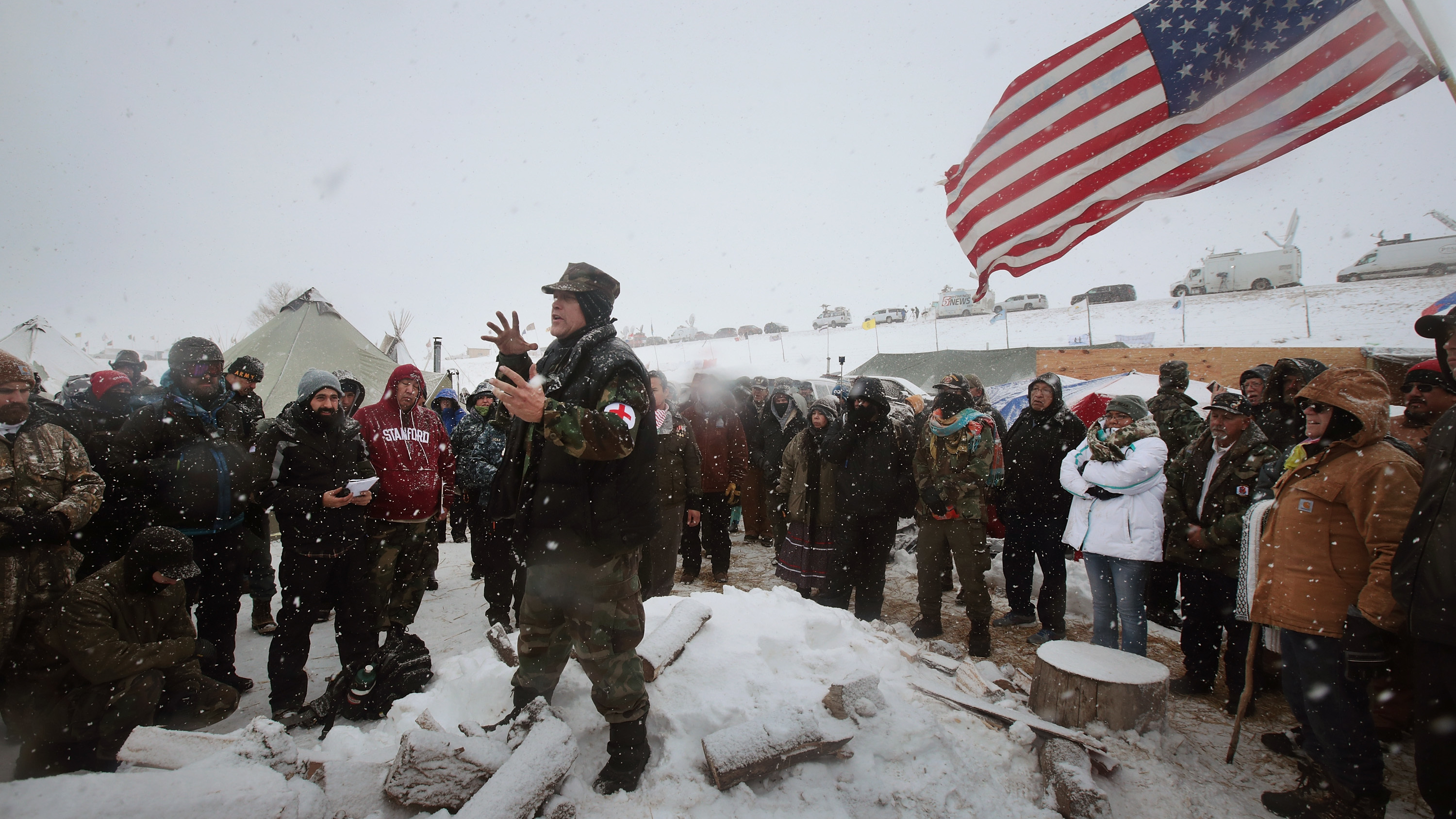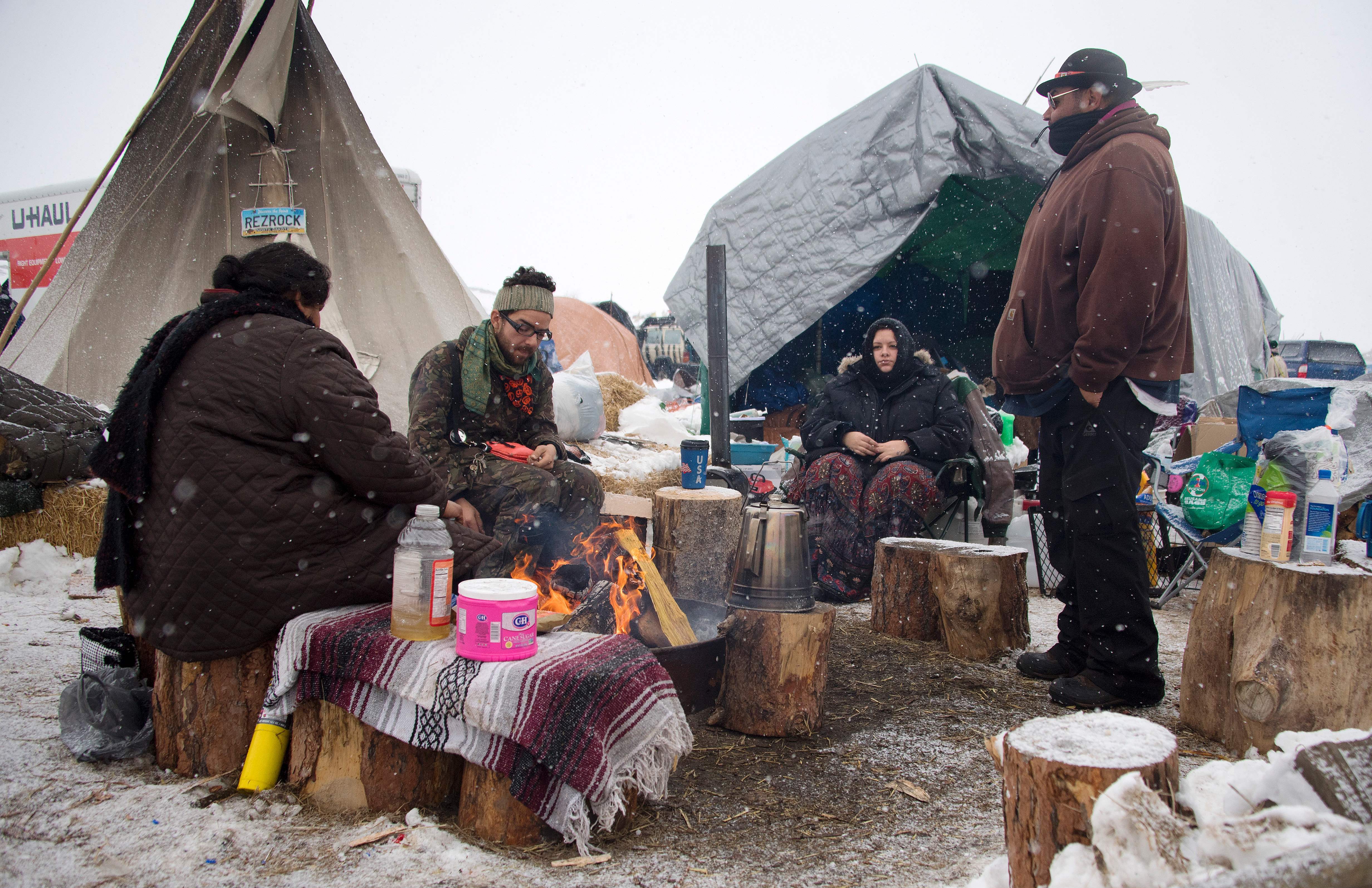Standing Rock Leader Asks Those Who Are Not Sioux To Leave Pipeline Protest Area
By Rebecca Hersher

Standing Rock Leader Asks Those Who Are Not Sioux To Leave Pipeline Protest Area
By Rebecca HersherCassi Alexandra for NPR
The chairman of the Standing Rock Sioux tribe in North Dakota told Reuters on Monday that he would like people who are not Sioux to leave the protest area near the route of the Dakota Access Pipeline.
“I’m asking them to go,” Dave Archambault III told the wire service, saying that the Obama administration “did the right thing,” and that he hoped to “educate the incoming administration” of President-elect Donald Trump.
“Nothing will happen this winter,” he said.
Throughout the summer and fall, members of the tribe have been joined by protesters from elsewhere. In November, some protesters were injured when police used water hoses to disperse groups of demonstrators in freezing weather. Protesters have blamed police for other injuries.

In the past two weeks, 2 feet of snow has fallen on the area.
Members of the tribe are protesting the pipeline because they say it could contaminate water and that the route threatens sacred lands. Court filings on behalf of the tribe said the Standing Rock Sioux had not been adequately consulted about the route of the pipeline.
On Sunday, the Army Corps of Engineers denied a permit for the 1,172-mile pipeline to cross under a dammed section of the Missouri River just north of the Standing Rock Sioux Reservation. The river crossing is the last major piece of the pipeline that remains unfinished.
The Army Corps cited tribal concerns in its decision, as we have reported:
“Jo-Ellen Darcy, the Army’s assistant secretary for civil works, said after talking with tribal officials and hearing their concerns that the pipeline could affect the drinking water, it became ‘clear that there’s more work to do.’
” ‘The best way to complete that work responsibly and expeditiously is to explore alternate routes for the pipeline crossing,’ Darcy said in a statement.
“The Army Corps says it intends to issue an Environmental Impact Statement with ‘full public input and analysis.’ ”

The company building the $3.8 billion pipeline, Energy Transfer Partners, called the decision a “purely political action.”
On Sunday, a group of U.S. military veterans arrived at the protest site, saying they could help protesters hold the line between themselves and law enforcement.
Before they arrived, the commander of the North Dakota National Guard, Maj. Gen. Al Dohrmann, said at a Saturday press conference that he and members of the local sheriff’s office had met with both tribal leaders and a leader of the veterans group, and that they had mutually agreed not to cross a bridge that has been the site of previous clashes between police and protesters.

“You look at it, and it looks like a war zone. And we just want to support the tribe,” Army veteran Angie Secrest of Yukon, Okla., told NPR last week, before she left for North Dakota. “We want them to know that, though they may be feeling like they’re left out there alone, they’re not.”
Daniel Calderon, a 54-year-old ex-Marine and former Los Angeles Police Department officer, told NPR on Monday morning that he was at the protest site to help in any way he could. “We’ve been picking up the trash, finding firewood, unloading trucks, whatever it is that needs to be done,” he said.
“I was planning to stay until [Dec. 8], or even longer,” he said, but the announcement by the Army Corps might lead him to leave sooner.
“That’s still questionable at this point. I think a lot of guys are walking around with a question mark over their head,” he said, adding that he would defer to the leaders of the veterans group about when to leave.
Copyright 2016 NPR. To see more, visit
NPR.
9(MDI0OTI1MTAyMDE0NjY3ODA3NjRjOTNhZg000))
